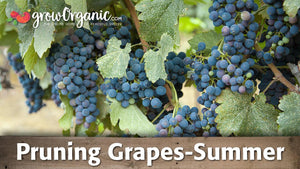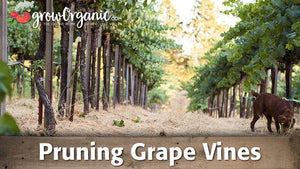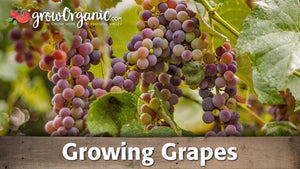Item Number: FV035
Merlot Wine Grape Vine
Cultivate World-Class Merlot Grapes at Home
Mix-and-match for free shipping when purchasing 6 or more perennial berries, vines, or crowns!
The Merlot Wine Grape Vine brings the elegance of this classic Bordeaux varietal to your home vineyard or garden. Known for producing smooth, velvety wines with flavors of plum, black cherry, and hints of chocolate, Merlot is a versatile and highly sought-after grape. With its adaptability to various climates and soil types, this vine offers an excellent opportunity for both novice and experienced growers to enjoy premium-quality wine grapes right in their backyard.
Key Features:
- Classic Bordeaux Grape: Produces premium-quality grapes for winemaking, blending, or fresh consumption.
- Robust & Vigorous Growth: Thrives in a wide range of climates and soil types with proper care.
- Harvest-Ready Berries: Medium-sized clusters ripen mid-to-late season, offering abundant yields.
- Rich Flavor Profile: Balanced acidity and bold fruit flavors ideal for crafting exceptional red wines.
Growing Information:
- Sunlight: Requires full sun for optimal growth and fruit production.
- Soil Requirements: Prefers well-drained, sandy loam or gravelly soils.
- Watering: Maintain consistent moisture during the growing season, avoiding overwatering.
- Pruning: Annual pruning is essential to manage growth and encourage high-quality fruit production.
- Hardiness Zone: Suitable for USDA zones 6–9, tolerating mild winters and warm summers.
Why Choose Merlot Wine Grape Vines?
Merlot vines are cherished for their adaptability, ease of cultivation, and ability to produce high-yield, flavorful grapes. Whether you're starting a home vineyard or adding to an existing collection, Merlot offers both beauty and utility with its lush green foliage and bountiful clusters of deep purple fruit.
Ideal for Home Winemaking and Fresh Eating:
Growers can enjoy the satisfaction of harvesting Merlot grapes for handcrafted wines or savor them fresh off the vine. These grapes are also excellent for blending with other varietals to create unique flavor profiles.
Care Tips for Thriving Vines:
- Plant in a location with ample sunlight and good air circulation.
- Space vines approximately 6–8 feet apart to ensure proper growth.
- Apply a balanced fertilizer during the growing season to support healthy development.
- Protect from pests and wildlife with appropriate netting or barriers.
Elevate Your Vineyard with Merlot
Bring the rich tradition of Merlot winemaking to your garden with this classic grapevine. Perfect for wine enthusiasts, hobbyists, or anyone who appreciates the beauty of growing their own fruit, the Merlot Wine Grape Vine delivers in quality and charm.
Order Your Vine Today!
Experience the joy of cultivating Merlot grapes and creating wines that rival those from renowned vineyards. Start your winemaking journey with this exceptional grapevine!
Visit our Berry, Vine & Crowns Characteristics Chart to compare growing characteristics for all our berries, vines, and crowns.
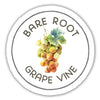


Check Your Zone Compatibility:
Compatible with your zone.
Growing Zone for

Our Guarantee To You
Since 1976, we've served our customers at every stage of growing. Please contact us at any time. We are happy to support and assist you.
Shipping Information
Shipping Information
Cannot ship to the following states: HI , AK , PR , GU , VI , OR , WA , ID
Cannot ship via USPS.
Cannot ship via SmartPost.
Shipping Weight: 3.3 lb
Dimensions: 18.0"L x 3.0"W x 3.0"H
Features
Features
- Open-Pollinated
- Thornless
Characteristics
Characteristics
Planting & Care
Planting & Care
Useful Information
Useful Information
Guarantee
Guarantee
Limited Dormant Tree & Plant Guarantee
* Claim deadline is June 15th
We guarantee that your dormant tree or plant will arrive in good, viable condition. If your tree arrives in substandard condition, notify us within 3 days of delivery. Please email pictures of the box, inside packaging, the tree and its roots to helpdesk@groworganic.com. We will investigate your claim and process a request to exchange or refund the damaged product.
If your dormant tree or plant has not grown new leaves by June 15th, you may be eligible for our Limited Dormant Tree & Plant Guarantee. This guarantee provides for a store credit for the purchase price of the tree, excluding shipping. Please see the Instructions below.
Important Dates:
- April 1st Dormant trees/plants must be planted in the ground
- May 15th Perform scratch test, if no new leaves have grown
- June 15th Deadline to apply for a dormant tree/plant credit
All required documentation must be received by June 15th for your claim to be considered. Claims or documentation received after June 15th will be denied, without exception. Instructions listed below
Terms and Conditions
We cannot guarantee that your tree or plant will remain alive and healthy after it is received, or bear fruit as there are too many variables in your environment that are beyond our control (i.e. soil preparation, weed and pest control, proper irrigation, chill hours, compatible hardiness for your growing zone, proper choice of pollinator, extreme weather, rodent damage, disease, etc.).
We cannot guarantee that we will be able to provide a replacement tree/plant of the same species either that same growing season or in future years. Customers are responsible for all shipping fees associated with replacement trees and plants.
If we determine that the tree you purchased directly from us is not viable, we will issue you a store credit (not a refund) for the purchase price of the affected dormant tree or plant. Shipping is not included in the dormant tree/plant guarantee. Store credits can be used to purchase any product we sell and are valid for use only until July 1st of the following year.
Historically, 98% of our dormant trees and plants grow and thrive when they have been cared for and planted using our growing guides. Dormant trees and plants must be planted in the ground by April 1st in order to be eligible for credit. If the ground in your area is still frozen solid, you may temporarily plant your tree or plant in a pot.
Potted, non-dormant trees or plants are excluded from this guarantee as they are not dormant at the time of shipment. Evergreen trees such as citrus, avocado and olive trees are not available for credit under the Dormant Tree and Plant Guarantee.
Instructions
We guarantee that your dormant fruit tree or plant will leaf out, if you care for it according to our growing guides. In the unlikely event that your dormant tree or plant does not have leaves by May 15th, follow these simple steps to apply for a store credit:
Before you call or email, please perform a “scratch test” to determine if the tree or plant is still alive. This video shows how to check for live tissue under the bark. Scratch tests need to be done a few inches above and below the graft.
Green Cambium Layer / Living Trees
If the cambium layer under the bark is green, give your tree a little more time. It is still alive, but hasn’t come out of dormancy yet. Check to make sure that it is getting the right amount of deep root water, enough sunlight and that the weather is warm enough for that type of tree/plant to come out of dormancy. Every tree has its own personality and will come out of dormancy at different times. Be sure to submit the required documentation listed below by June 15th, if it doesn’t grow leaves.
Brown Cambium Layer / Dead Trees
If the scratch test shows a brown cambium layer or if your dormant tree/plant doesn’t have leaves by June 1st, please email us at helpdesk@groworganic.com. All required documentation listed below must be received by June 15th for your claim to be considered. To be considered for the guarantee claim, all required documentation must be received by June 15th. Incomplete submissions will be denied.
Required Documentation
- Order number
- Name of dormant tree/plant and the quantity affected
- Photos of each tree or plant showing:
- The roots (tree or plant must be pulled out of the ground)
- The scratch test areas
- The entire tree/plant
We reserve the right to not issue credit for items that have already been replaced. We also reserve the right to require photographic evidence that the tree/plant was not killed by root rot, rodent or mechanical damage.
Share
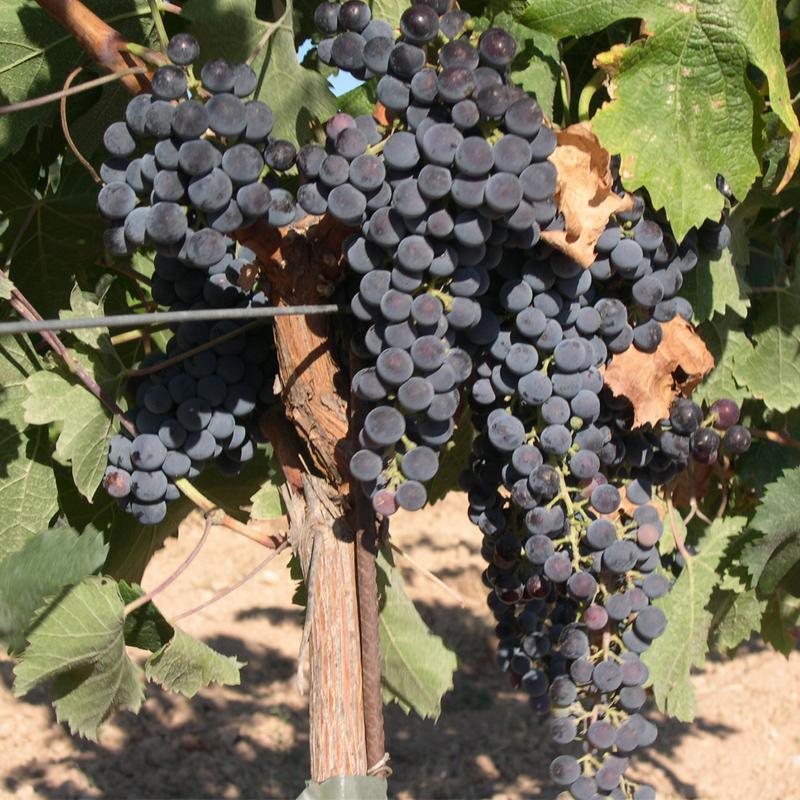
Just planted a week ago but roots looked good and were moist with wood chips and shipping was speed was normal... hopefully i planted em right and they grow.
I received my package very timely. It’s been three weeks since I planted my vine and I already see green sprouts popping out. So far I am very pleased with my purchase.
I\'ve planted 120 of the Merlot Vines over the last 3 years. They are the lowest price I could find, yet the plants are healthy and large. I was expecting tiny 6 inch plants and dug my holes accordingly. When they arrived I realized my mistake, huge roots and beautiful, dormant vines. They have all grown successfully. Thinking about expanding the Vineyard and planting more, I already know where I\'ll be buying my future stock.
Videos
Articles
-
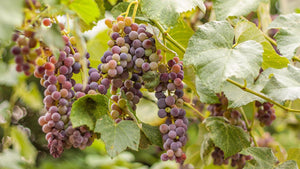 Sun, Jan 07, 2024
Sun, Jan 07, 2024Planting & Growing Grapes
-
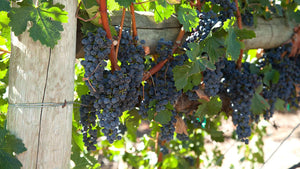 Wed, Mar 12, 2025
Wed, Mar 12, 2025When to Plant Grapes: A Complete Guide to Planting Grapes in Clay Soil and Beyond
-
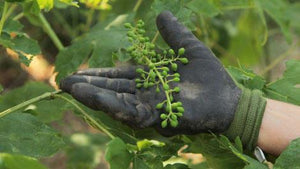 Thu, Jul 03, 2025
Thu, Jul 03, 2025Trim Grapes in Summer With Confidence: Learn How to Trim Grape Vines in Summer and the Secrets to Pruning Grape Vines During Growing Season
-
 Thu, Feb 06, 2025
Thu, Feb 06, 2025Planting & Pruning Grape Vines



